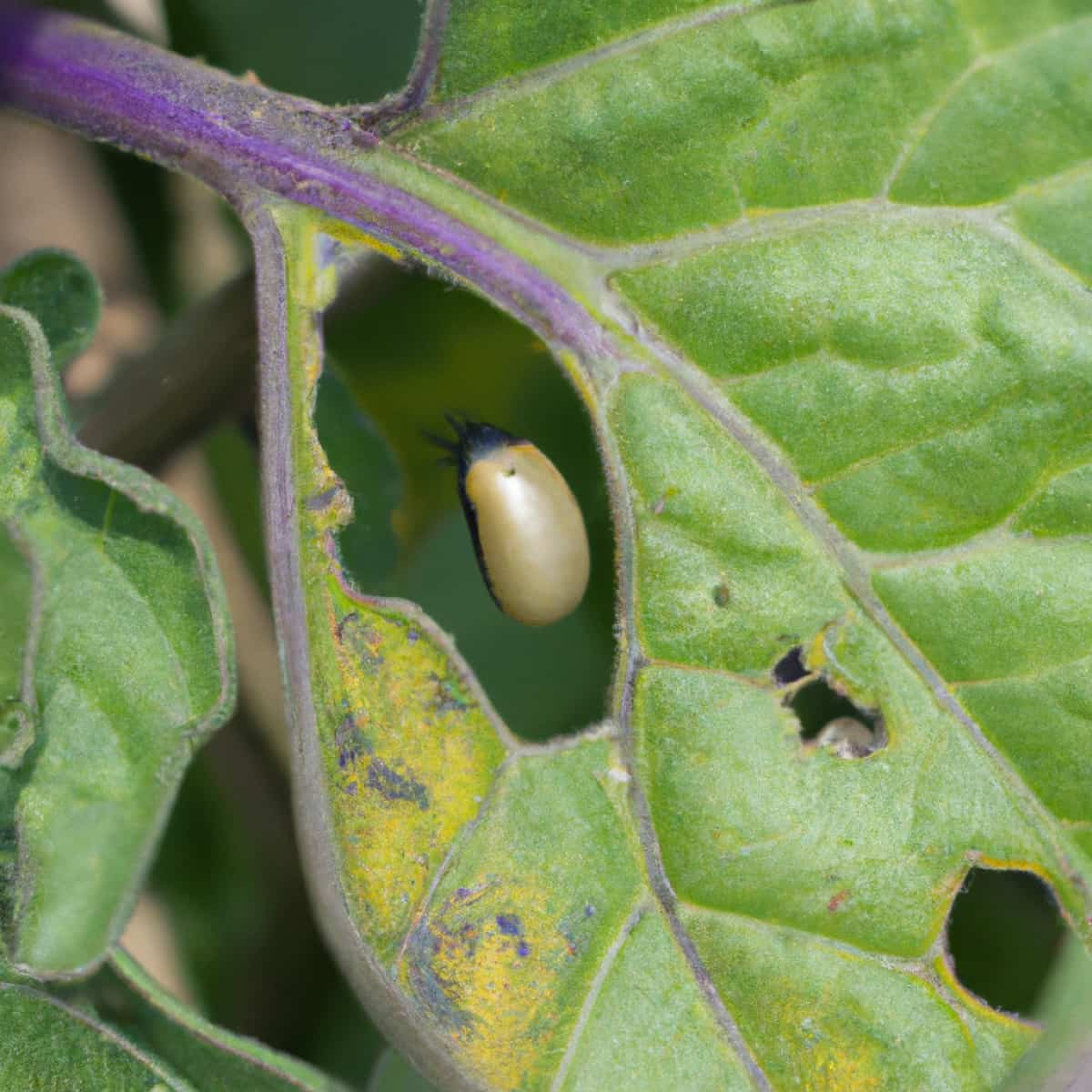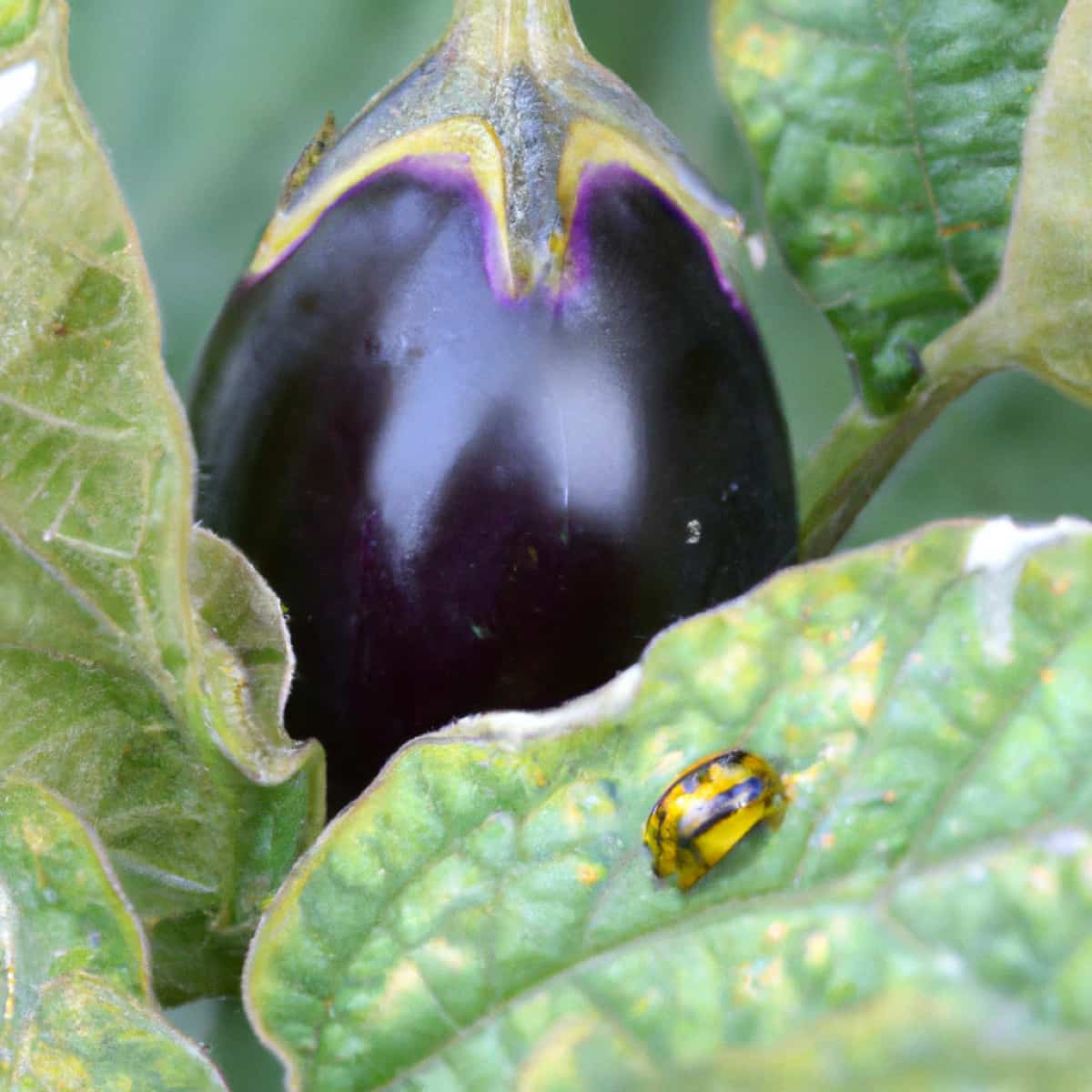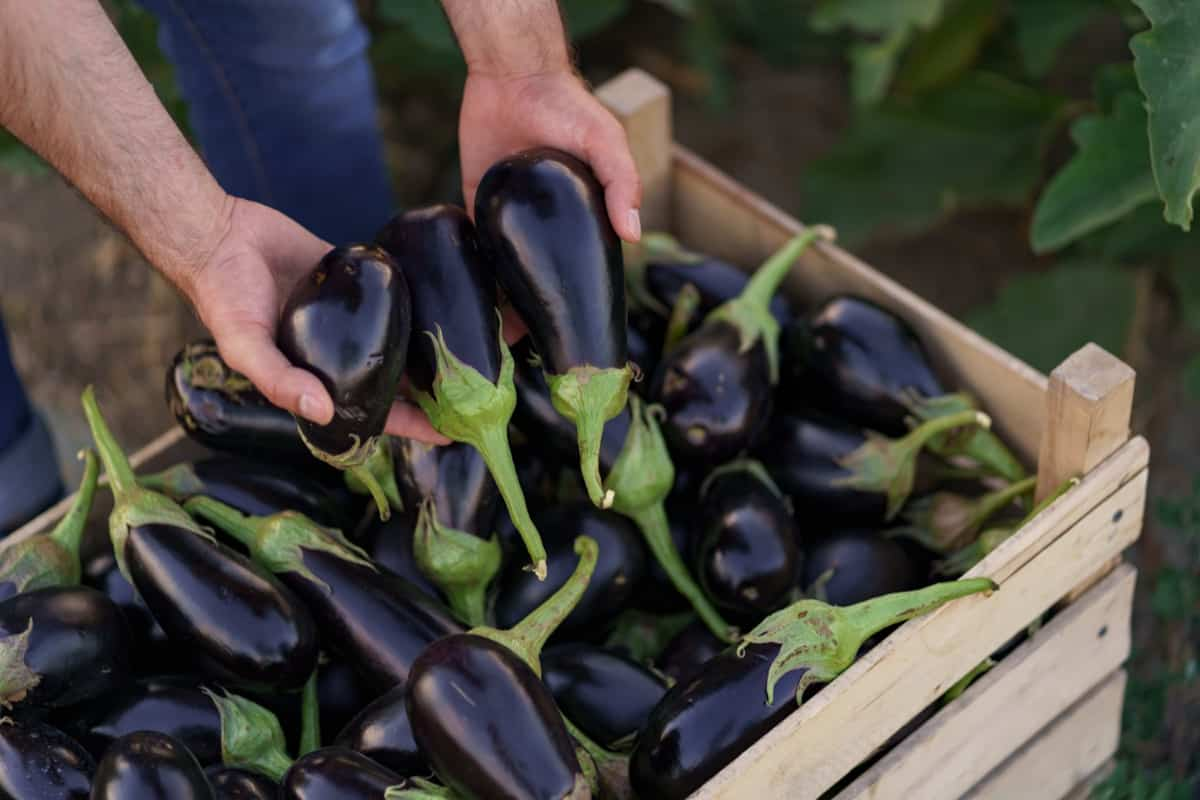Flea beetles are small, jumping insects known to cause significant damage to eggplants. They can affect the plant’s health in multiple ways, such as feeding on the leaves and transmitting plant viruses, causing reduced yield and marketability. The larvae of flea beetles can also burrow inside the plant roots and stems, leading to reduced vigor. In this article, we have discussed various methods to control flea beetle infestations in eggplants.

Flea Beetle Management in Eggplant
The life cycle of Flea Beetle
- The adult Flea beetle lays its eggs in the soil near the base of the host plant. The eggs are small and oval-shaped and hatch after about seven days.
- The larvae, which are pale yellowish-white with brown heads, tunnel through the host plant’s stems, roots, or leaf midribs. They have three stages and become mature in about a month. During this time, they cause damage to the plant by feeding on the roots and stems, which can lead to reduced plant growth and vigor.
- After reaching maturity, the larvae pupate in small chambers constructed in the soil beside the plant at a depth of 0.5-8 cm. Pupation lasts up to a month, and during this time, the larva undergoes metamorphosis and transforms into an adult beetle.
- The adult Flea beetle emerges from the pupal chamber and begins to feed on the leaves and stems of the host plant, starting the cycle anew. The entire life cycle of the Flea beetle, from egg to adult, can take several weeks to a few months, depending on environmental conditions.
Impact of Flea Beetle
- The flea beetle can have a significant impact on eggplant plants. Adult flea beetles feed on the leaves of eggplants, causing small holes and leaving a characteristic “shot-hole” appearance
- Flea beetles can transmit plant viruses, including the eggplant mottled dwarf virus, which can cause stunted growth, leaf curling, and reduced fruit quality. The indirect impact of flea beetles in spreading plant viruses can particularly damage eggplant crops, as they are susceptible to various viral diseases.
- The impact of flea beetles on eggplants can be significant and multifaceted, affecting plant growth and yield.
Identification of Flea Beetle in Eggplant
The adult Flea beetle is typically 3-4.5 mm long and has a shiny brassy-green, green, or blackish-blue color with a metallic shine. They have distinctive lines of small pits on their wing covers, which can help to differentiate them from other beetles. The Flea beetle’s hind legs are enlarged, allowing them to jump considerable distances and fly.
When examining eggplant plants for Flea beetles, look for small holes or pits on the leaves and signs of damage to the roots or stems caused by the larvae. The presence of adult Flea beetles jumping or flying around the plant can also be a sign of infestation.
Damage symptoms of Flea Beetle in Eggplant
- The Flea beetle can cause significant damage to eggplant plants. The adults typically feed on the leaves and stems of emerging seedlings, as well as on green pods and heads.
- They leave numerous small, round, or irregularly shaped holes on the undersides of the leaves, giving the leaves a characteristic “shot-hole” appearance.
- Although the holes are usually not through the leaf, the damage can still result in reduced photosynthesis, plant growth, and defoliation in severe cases.
- They trim the root hairs and make circular pits in the tap roots, which can reduce the marketability of the crop.
- The feeding damage caused by the larvae is external to the root, reducing plant vigor and growth. This can make the plants more vulnerable to other pests and diseases and, in severe cases, can result in plant death.
In case you missed it: Alternaria Rot Management in Eggplant: Symptoms, Treatment, Chemical, Biological, Natural, and Organic Control

Flea Beetle Management in Eggplant by Cultural method
- Effective management of Flea beetles in eggplant can be achieved through various cultural methods that do not rely on chemical insecticides. These methods include the use of trap crops, intercropping with radishes, the use of row covers, and good field sanitation practices.
- Trap crops like Chinese Southern Giant Mustard can attract and divert Flea beetles away from eggplant plants. The beetles will feed on the trap crop instead of the eggplant, reducing damage to the primary crop.
- Intercropping with radishes, such as ‘Chinese Daikon’ or ‘Snow Belle,’ can also help to deter Flea beetles. Radishes are a natural repellent to Flea beetles, and interplanting them with eggplant can help to reduce beetle infestations.
- Row covers can physically block Flea beetles from accessing the eggplant plants. These covers can be made from fabric or plastic and should be placed over the plants at the beginning of the growing season.
Flea Beetle Management in Eggplant by Chemical method
Insecticides can be effective in controlling Flea beetle populations in eggplant. Products based on chlorpyrifos and malathion are commonly used and have shown good results in controlling beetles.
Flea Beetle Management in Eggplant by Organic/Natural method
Insecticides approved for use in organic/natural flea beetle management in eggplant include PyGanic and the Entrust formulation of spinosad. PyGanic is a natural pyrethrin insecticide derived from chrysanthemum flowers and targets the nervous system of beetles. The Entrust formulation of spinosad is a natural bacterial insecticide derived from the fermentation of a soil bacterium and is effective against Flea beetles.
Preventive Measures for Control of Flea Beetle in Eggplant
- Adjust planting times: Planting times can be adjusted to avoid periods of peak adult activity. Planting earlier or later can help in reducing the impact of Flea beetles.
- Plant trap crops: Planting trap crops attractive to the Flea beetle can lure them away from the main crop. For example, Chinese Southern Giant Mustard or Snow Belle radish can be trap crops.
- Plant non-host plants: Planting non-host plants that repel or block insect pests can help reduce Flea beetle infestations. Plants such as marigolds, basil, and catnip effectively repel Flea beetles.
- Add organic mulch: Adding organic mulch to the soil can interfere with the egg-laying and the larval stages of the Flea beetle.
- Monitor plants: Regularly monitoring plants, especially in spring, can help detect Flea beetle infestations at an early stage.
- Balanced fertilization: Supplying essential nutrients to the plants through balanced fertilization can help promote plant health and reduce the impact of Flea beetle damage.
In case you missed it: Phytophthora Blight Management in Eggplant: Symptoms, Treatment, Chemical, Biological, Natural, and Organic Control

Conclusion
Effective flea beetle management in eggplants requires an integrated approach with preventive measures, cultural controls, and organic and chemical methods if necessary. Planting non-host plants, using trap crops, adding organic mulch, and regular monitoring can prevent flea beetle infestations. Biological controls like using nematodes and predatory insects, cultural controls like interplanting with radishes or row covers, and organic sprays like PyGanic or the Entrust formulation of spinosad effectively manage.
- Beneficial Insects in Pest Management
- Natural Solutions for Pest Control in Flower Gardens
- Types of Fungicides Used in Agriculture
- Common Issues in the Fruit Development Stage of Pomegranate Farming
- Fruit Development Issues in Papaya: Easy Solutions and Treatment
- Soil-Borne Diseases and How to Protect Your Plants
- Practices to Prevent Disease Spread in the Garden
- From Wilted to Thriving: How to Treat Root Rot Naturally in Houseplants
- Natural Remedies to Cure Brown Spots on Fig Tree Leaves